

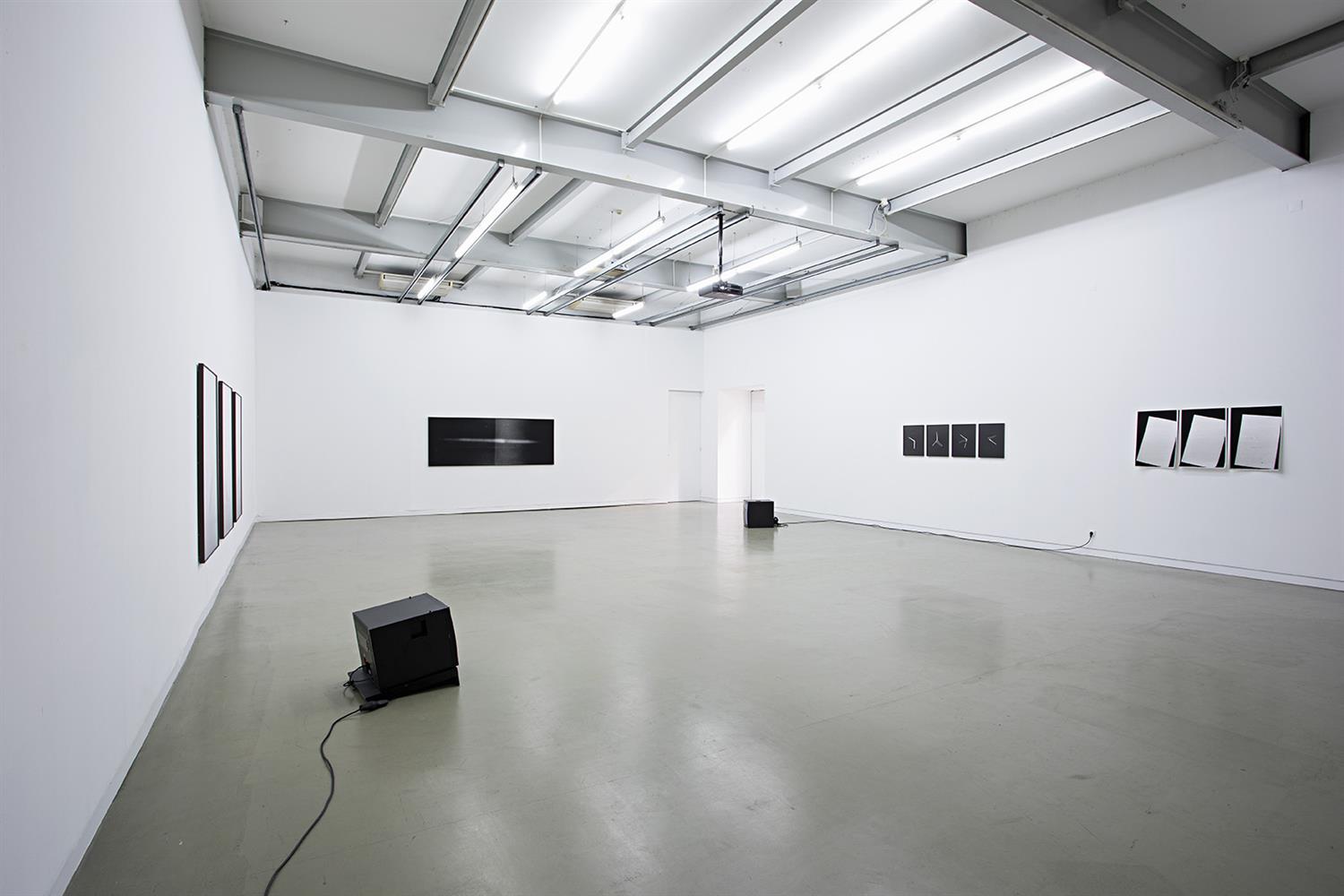
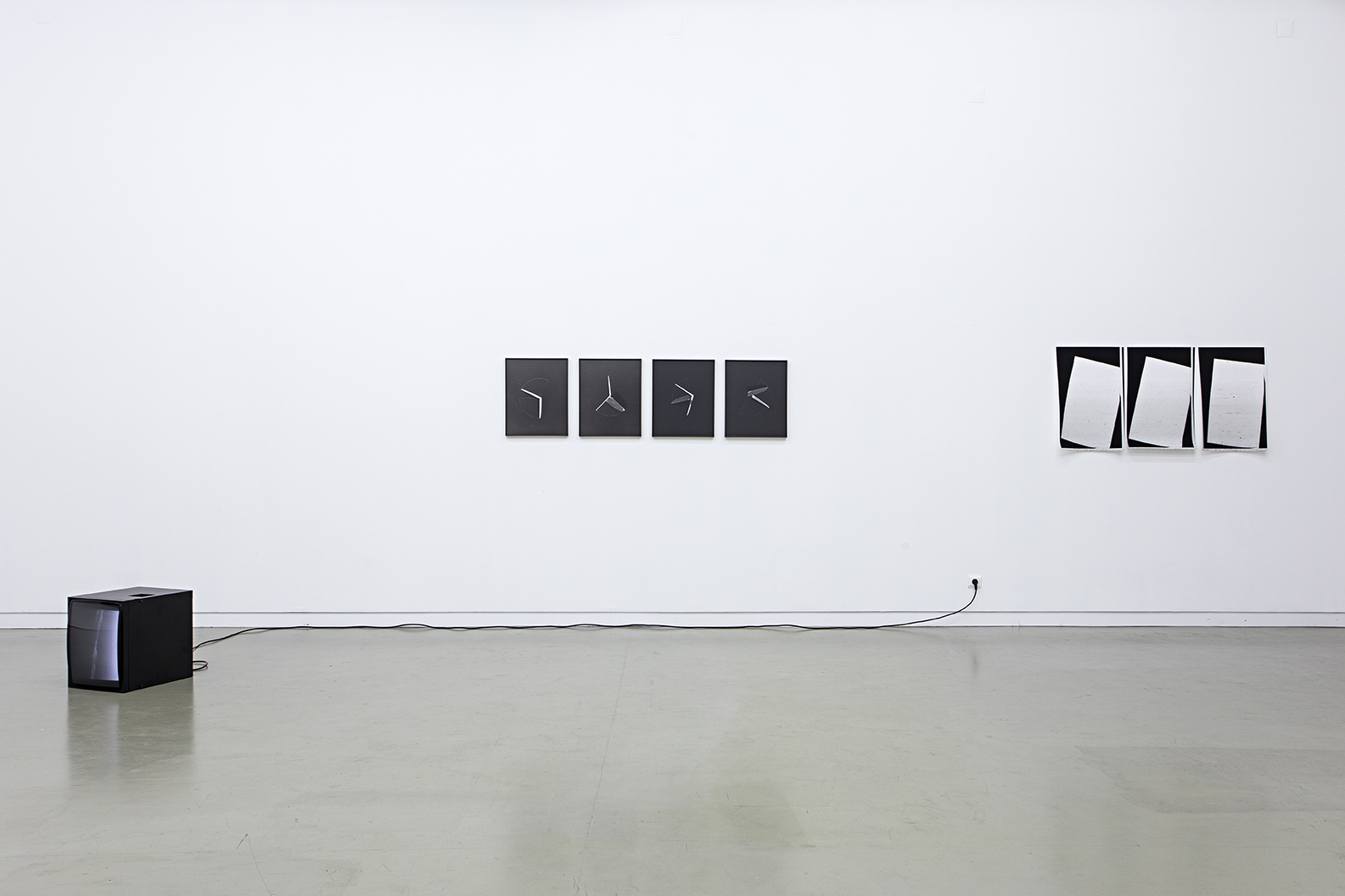



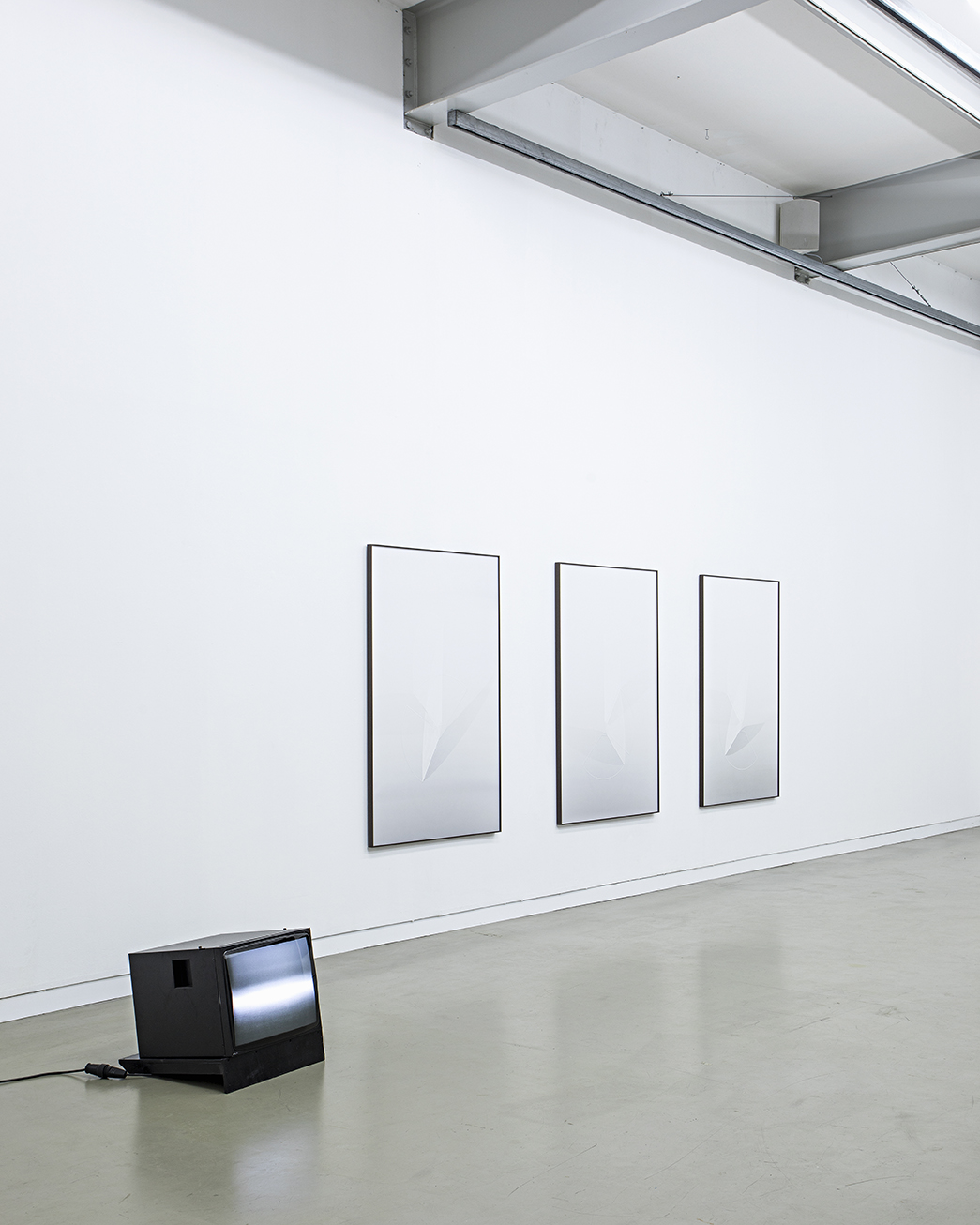


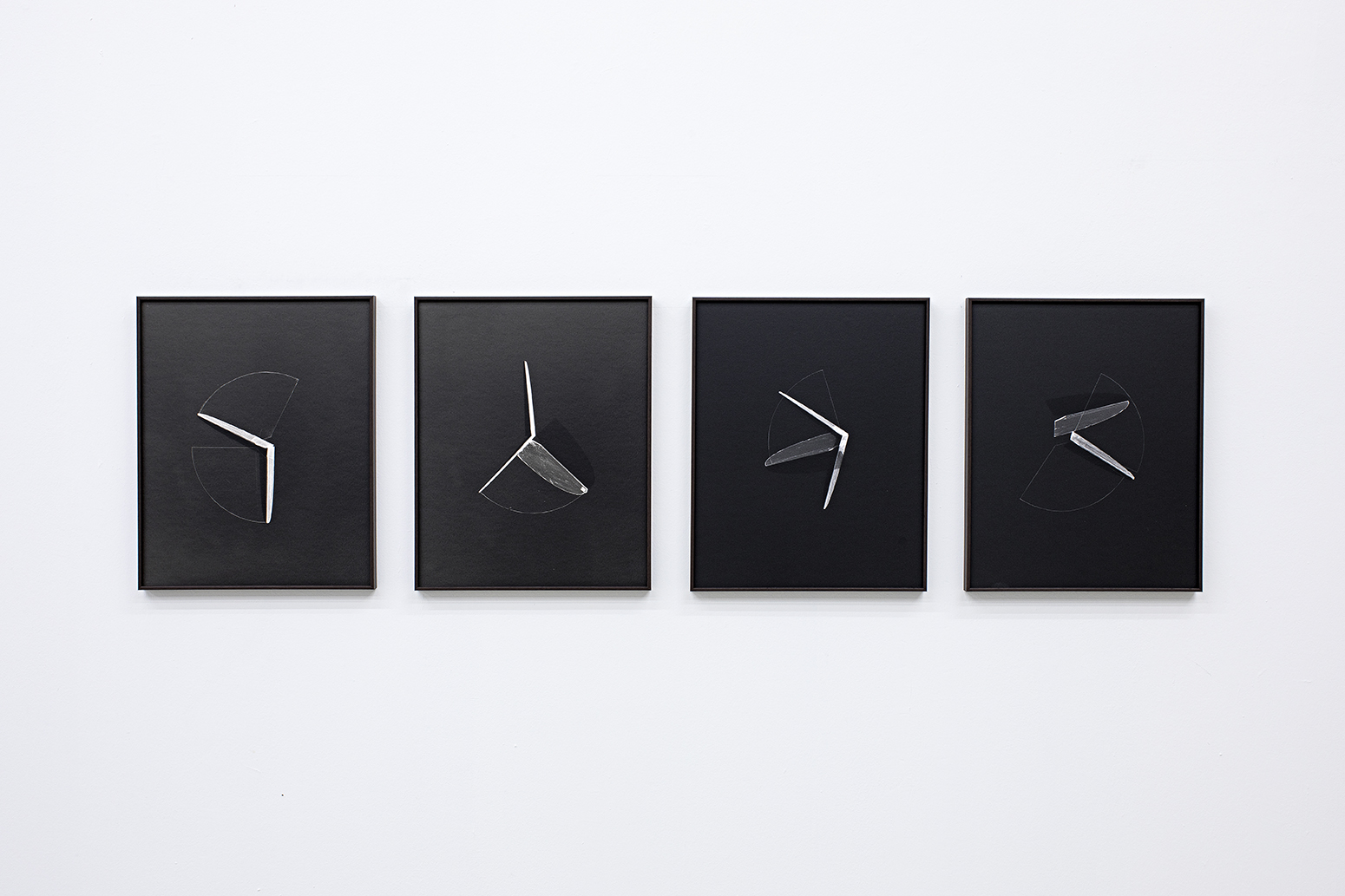

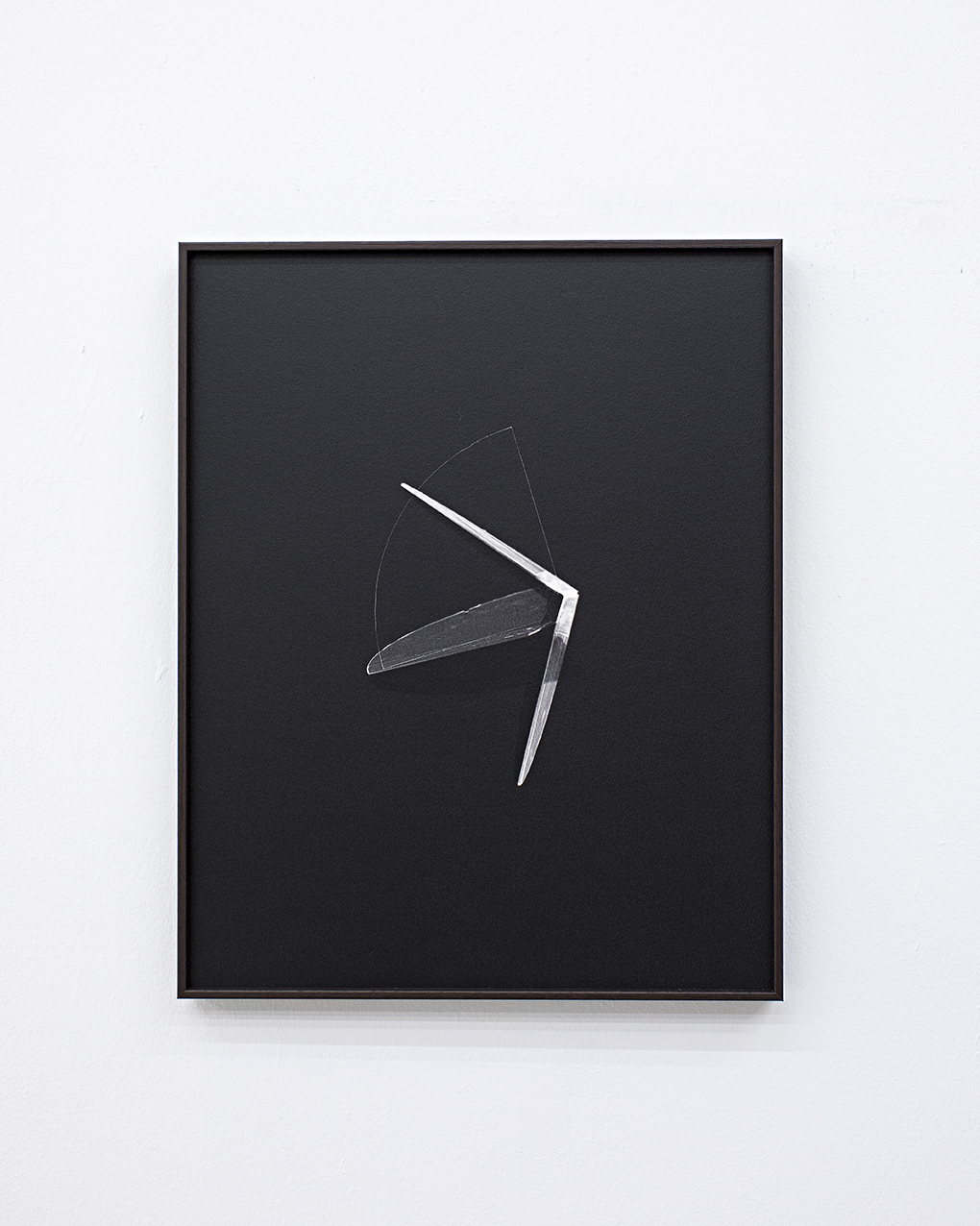
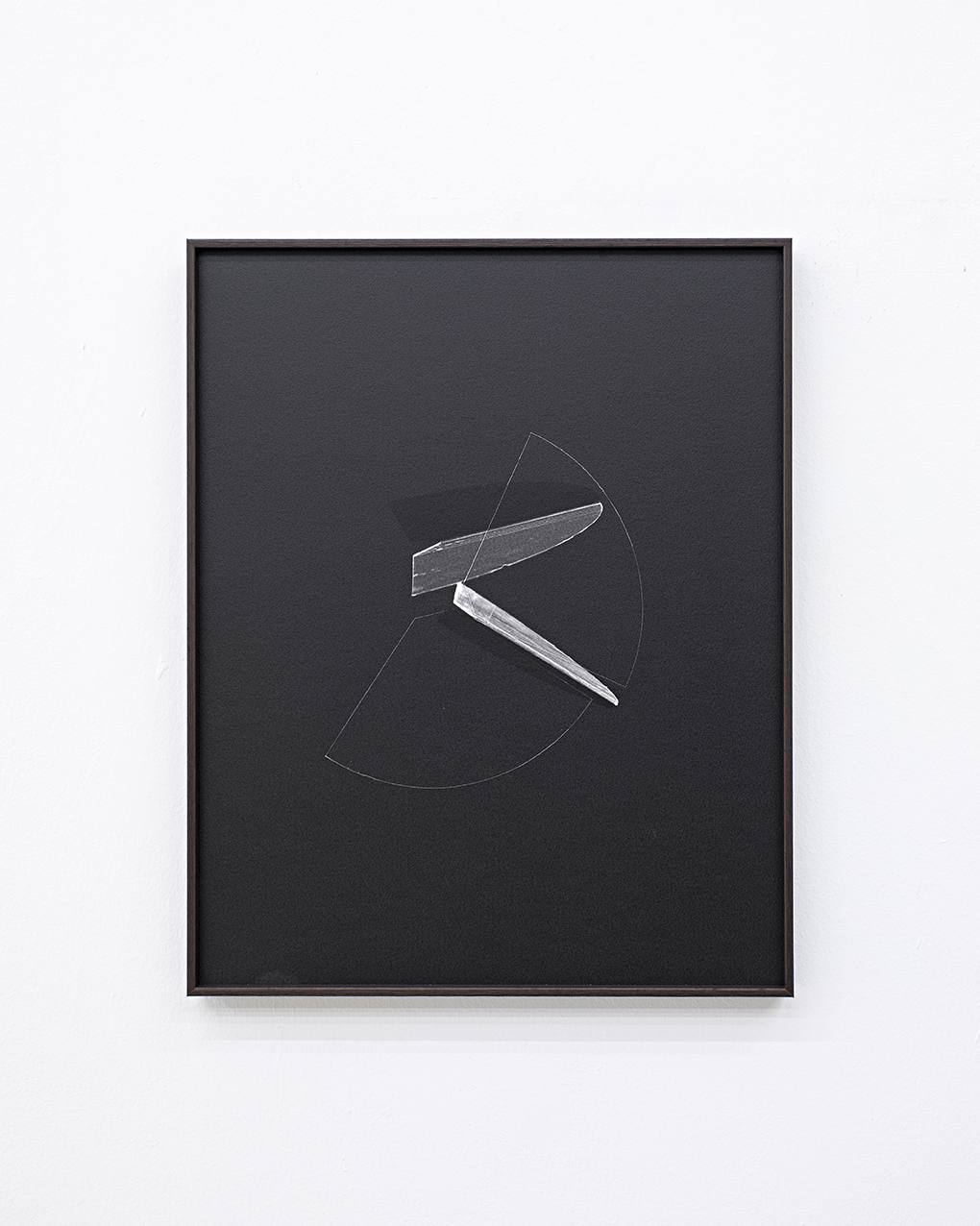
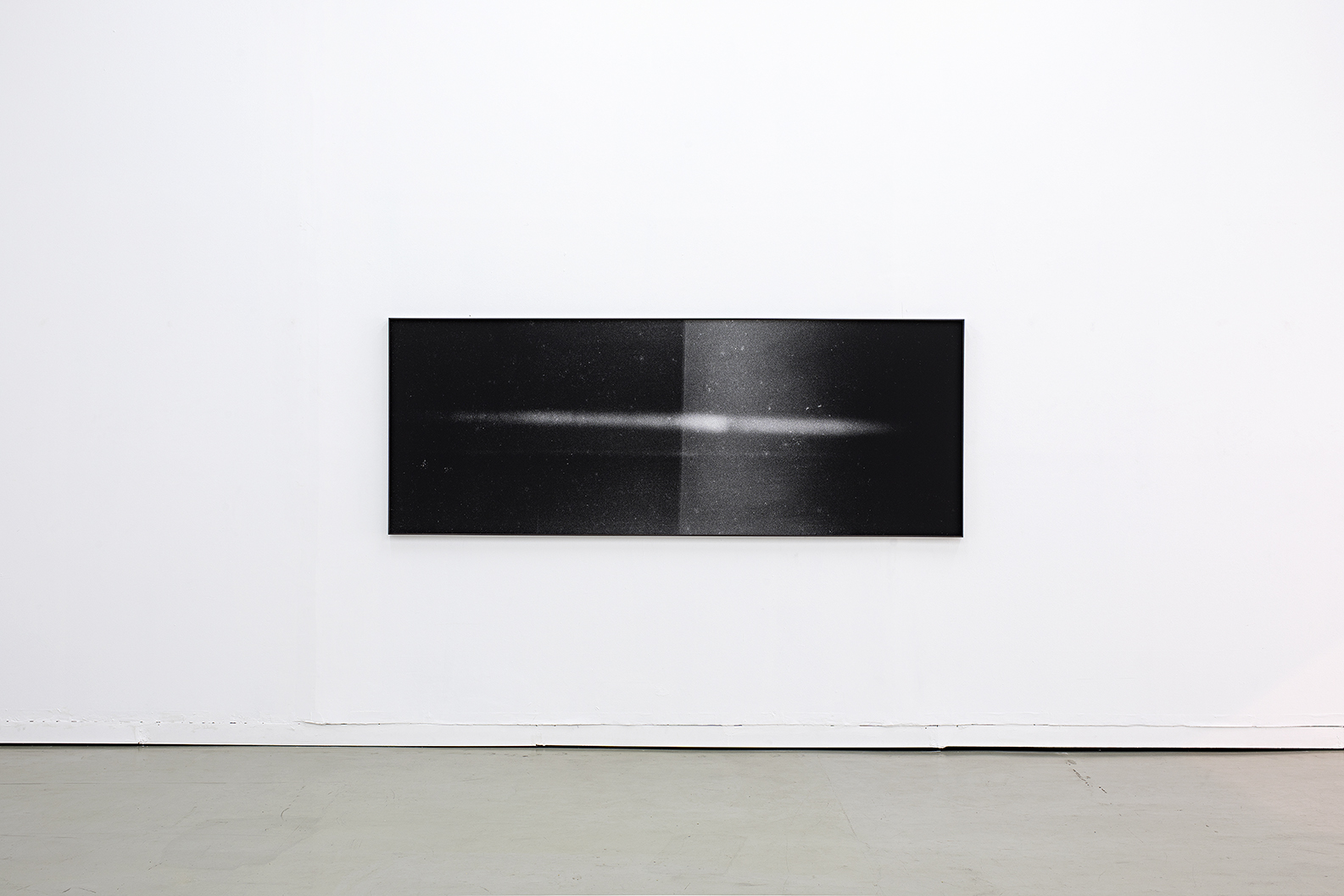


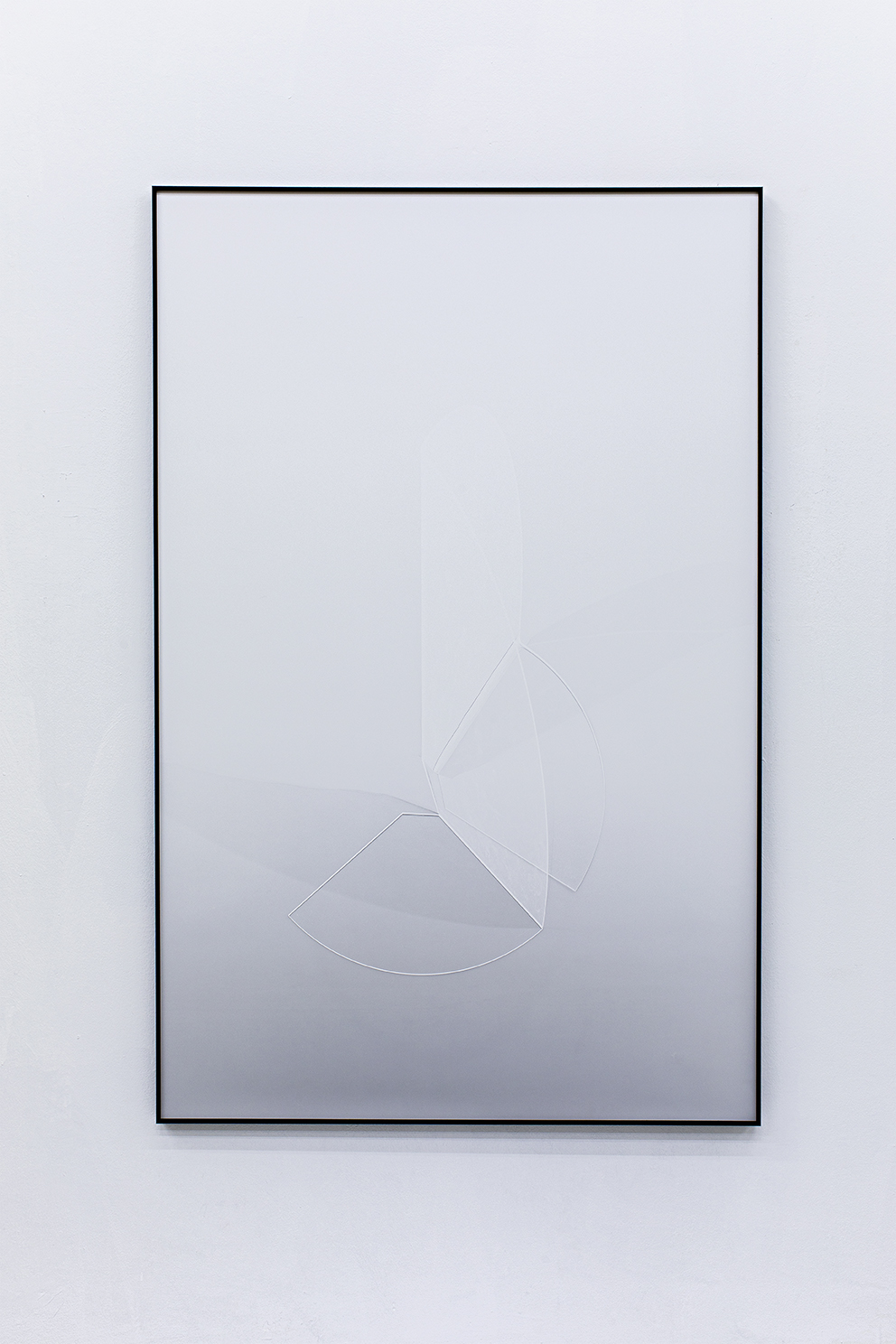


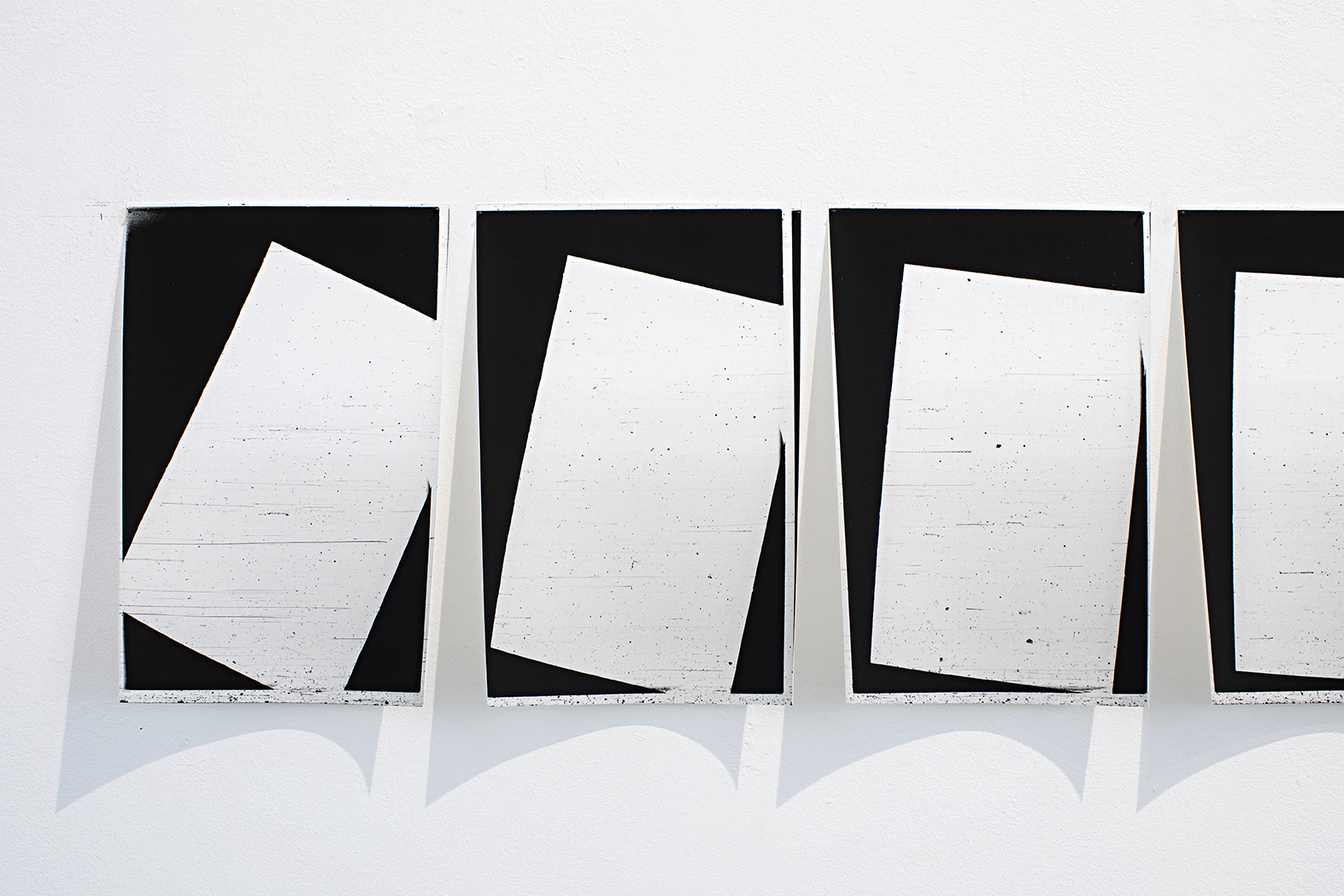

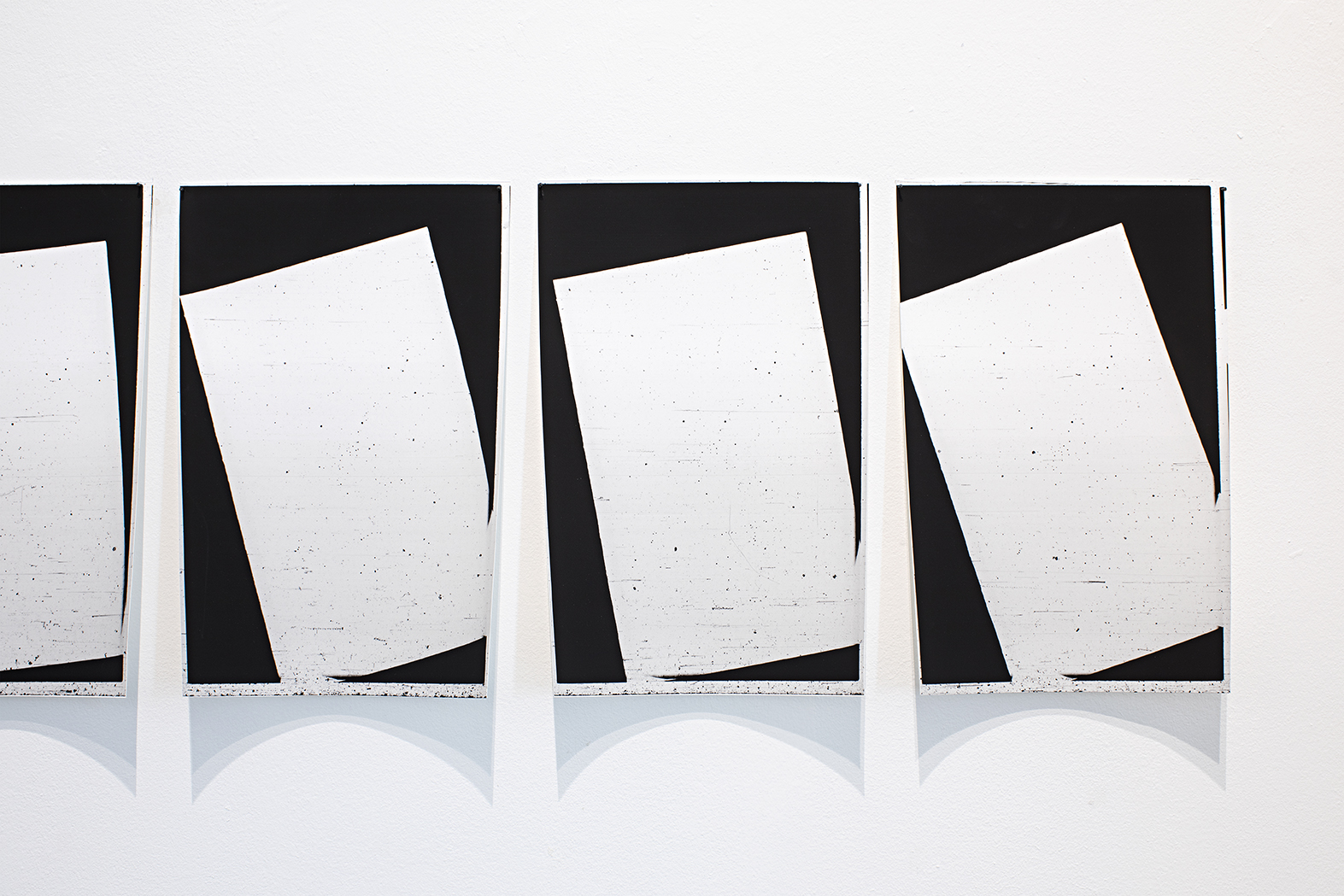
THE BIG WAVE
Galeria Filomena Soares, Lisbon – Portugal, 2018
May 10th to September 8th 2018
LIQUID BALLISTICS
Milk by Jeff Wall (1984), is one of contemporary
photography’s most intriguing images. It is also an (unexpected)
entry point into Letícia Ramos’ most recent body of work, currently
on exhibition at Galeria Filomena Soares. In the image, a man
sitting on the floor, with tense facial and body language, projects
the contents of a carton of milk into the air, producing a natural
form with unpredictable outlines: ‘the expression of infinitesimal
metamorphoses’, as the artist describes.
Relinquishing the complex psychological and social
weight that is frequently associated with this image (and with
Wall’s work in general), Milk is the departure point for the artist’s
pivotal essay ‘Photography and Liquid Intelligence’ (1989), in
which he describes the ‘liquid intelligence of photography’ as a
counterpoint to what he calls its ‘mechanical’ or ‘dry’ aspect. If
‘liquid intelligence’ is linked to a possible genealogy of chemical
processes – soak, bleach, rinse, dilute – that derive from a
lost memory of image production; then ‘mechanical intelligence’
is all the ‘ballistics’ that result from the mechanised opening and
closing of the shutter. In the first case, the experimental and
erratic character of the image – where the dream of freezing the
movement of light on the plate wasn’t yet considered (except as
a fantasy) – becomes, in the second case, the codification of
gestures of capturing, preserving and disseminating the image:
the foundation of the ‘modern’ concept of photography.
Ramos’ work is situated in the rare inflection of history
between the nostalgia of early days and modern ‘ballistic’
cynicism (borrowing from Wall’s expression), opening up to a field
of philosophical uncertainty (‘we don’t know if we are the future
of the past or the past of the future’) in relation to things that are
presented to us as ‘pure’ and unquestionable documents. With
a solid path in the art field with prominent exhibitions and prizes,
such as BES Photo (2014) and Instituto Moreira Salles Grant
(2017), Ramos unveils the poetic and fictional side of her many
‘scientific’ projects both through the creation of photographic
devices designed to capture images and rebuild movement and
her creative and experimental research on mediums that are
conventionally seen as ‘obsolete’, such as microfilm. Ramos has
said that she is ‘interested in pre-existing technical possibilities
used for non-artistic purposes and the extent to which they can
enrich experimentation’. As such, Ramos’ work offers a route to
understanding the bifurcated paths of the history of photography,
which restores (and challenges) the ‘merging’ aspect of images:
between chance and accuracy. Alongside a few other artists, she
takes a singular path to explore an affective, aesthetic or ‘liquid’
order through the mechanical and controlled act of producing a
‘reality’.
In her first solo show in Lisbon, Ramos chose a title that
is particularly familiar to us: The Great Wave. Many will remember
that summer at the end of the 1990s when the rumours of a false
tsunami triggered panic in the Algarve and thousands of beachgoers rushed away from the sea. The ‘phenomenon’ – identified
as a ‘dark mass’ on the horizon – was the result of an optical effect
linked to heat. However, this didn’t stop the population, the fire
brigade, the civil authorities, the press and others from publicising
the event as ‘real’. Followers of Ramos’ work are familiar with
her recurring interest in these types of ‘occurrences’, which
has taken the artist to remote landscapes, such as her journey
to circumnavigate the Artic Pole and her ‘historical-mythical’
accounts of earthquakes, including the catastrophic incident
of 1775 (Historia Universal de los Terremotos, Fundación Botín,
2017).
Using a similar approach to other exhibitions that
indistinctly introduce rumours and scientific facts, The Great
Wave explores montage procedures that make us oscillate
between a nostalgic atmosphere and something ‘spectacular’,
analogous to the ‘special effects of a smoke bomb’! Formal
studies on photographic materiality and image construction
without any stage-setting apparatus (‘I am more concerned
with the surface of the photographic paper than scenography’),
such as Carta Branca [Blank Letter], Bicho Branco [White Beast]
or Superfície I e II [Surface 1 and 2), coexist with artworks that
crystallise moments of exceptionality, where the phenomena is
transformed into objects of great poetry, such as Light Photogram
and Fata Morgana. Nonetheless, the conceptual territory shared
between these works is evident and is qualitatively explored in
the uncertainty we feel when visiting the exhibition. In fact, Fata
Morgana condenses this apparent dichotomy and ‘talks’ for the
whole exhibition. It simultaneously refers to the sorcerer Morgana
(King Arthur’s half-sister, who according to legend had the power
to change her appearance) and to an optical illusion produced in
the artist’s studio. The gap that seems to exist between these two
groups of works is in fact a statement in homage to our continuous
ability to use our imagination on the simplest light drawings on
paper. The fact that she is not using any type of camera and that
she produces unique images – as the ones presented here –
reinforces a speculative field that challenges the ‘mechanics’ of
modern photography, its construction and reproducibility.
Going back to ‘Photography and Liquid Intelligence’,
we understand that Wall’s effort to recover the ‘liquid’ is also a
way of criticising the evidence-like status of photographic images
and our idea of history. This is also the foundation of Ramos’
argument, particularly in a time when reality (the ‘event’, according
to Benjamin) is entirely focused on mass transmission. As it is no
longer necessary to look at the world because the camera will
do it for us, The Great Wave takes us closer to historical time
via caesura (or ‘interruption’). But how? By creating an effect of
proximity that places us before the world as if we were there for the
first time. Are the events in The Great Wave real? Yes and no, but it
doesn’t matter: the condition of ambiguity, on the scale of reality, is
applicable to the entire field of photography: the ‘liquid-mechanic’
ontology.
Marta Mestre
2018
